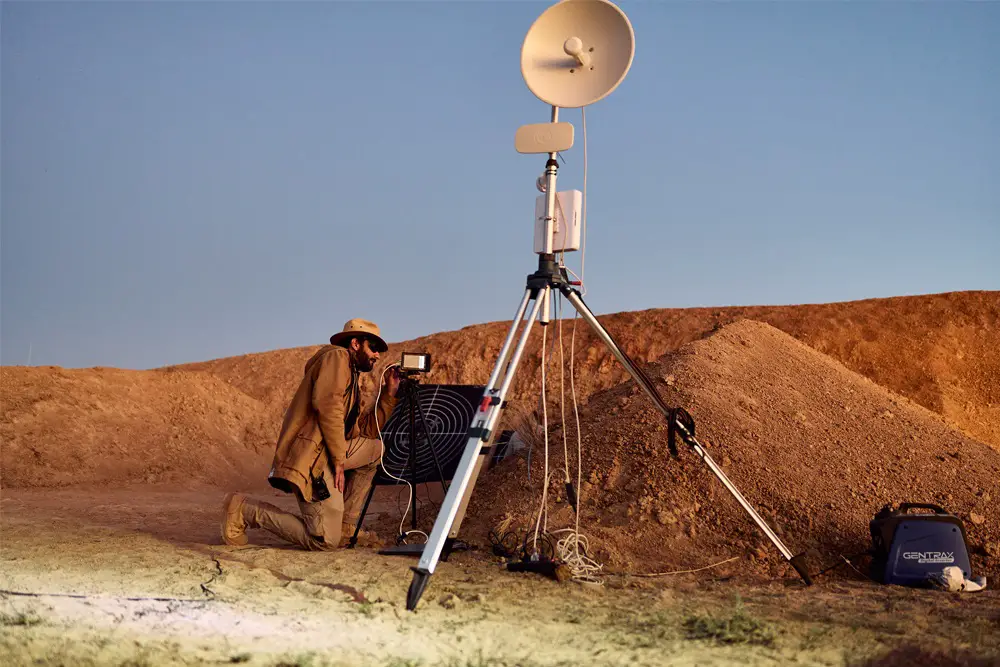In a groundbreaking demonstration on a remote weapons range in far western New South Wales, Australia, technicians are testing a cutting-edge directed-energy (DE) technology that could reshape the future of warfare. This remarkable feat marks the first known instance of a lethal laser system being employed to intercept an unmanned aerial vehicle (UAV) or drone on Australian soil. Operating under challenging conditions, employees of a Canberra-based defense company are refining this directed-energy weapon, which harnesses the power of electromagnetic energy in the form of light to neutralize targets remotely. Microwaves and radio waves can also be employed as alternative DE technologies. Directed energy falls under the category of electronic warfare technology and represents a pivotal focus of Pillar 2 within the AUKUS partnership. Furthermore, the Albanese government recently declared directed-energy technology a priority in its $3.4 billion Advanced Strategic Capabilities Accelerator (ASCA) program. Over the past three years, the Pentagon has reportedly invested an average of $1 billion annually in developing DE technology, an area of research spanning several decades for the United States and other nations.
Matt Jones, Executive Vice President for EOS Defence Systems, explains the advantages of using lasers, stating, “Lasers offer a lot of advantages; they’re very good at hitting high-speed targets. If you can keep energy up to a laser, you can keep engaging the target — so, in a traditional sense, against traditional engagement systems, it offers some significant advantages.”
Associate Professor Sean O’Byrne of the University of New South Wales highlights the challenges associated with implementing directed-energy weapons, such as managing the considerable heat generated during operation. He emphasizes the need to strike a delicate balance between producing sufficient light energy to engage targets and preventing damage to the laser system itself.Nonetheless, Professor O’Byrne remains optimistic about the potential advantages of DE weapons over conventional munitions. “They effectively try to melt or bake the object that they’re hitting – you don’t need to have the equivalent of bullets — it’s all light,” he said. “Because it’s directed, you get no collateral damage from an explosion or something like that, so you can direct it at a target and not hit things that you don’t want to hit.”
Recently, at the Klondyke Range Complex, located approximately 800 kilometers northwest of Sydney, the ABC had the privilege of witnessing EOS’s developmental 34-kilowatt high-energy laser system in action. The laser successfully engaged small quadcopter drones at distances of up to 1,000 meters, incapacitating them through what experts refer to as a “aerodynamic kill.” The laser’s precision targeting caused the drones to lose altitude and ultimately resulted in the melting of their flight control systems. This groundbreaking technology demonstration comes at a time when the importance of countering unmanned aerial vehicles is growing, as seen in the ongoing conflict in Ukraine. Surprisingly, the Australian Defence Force currently lacks a dedicated counter-drone capability within its Integrated Investment Plan, underscoring the significance of advancements like the directed-energy weapon tested in New South Wales. As DE technology continues to advance, it holds the promise of revolutionizing modern warfare, offering unparalleled precision and minimizing collateral damage, thus shaping the future of defense and security.













